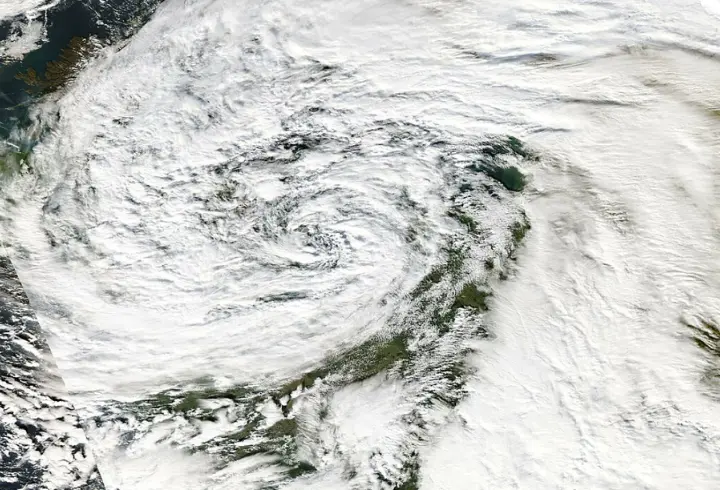Addressing climate change is extremely crucial in this day and age. One aspect that proves to be crucial for sustainability is accurate weather forecasting.
This makes the predictions limited and inaccurate. Recognizing this challenge, a new groundbreaking innovation has been unveiled, named – Microsoft Aurora.
The traditional atmospheric modeling techniques often fail to capture the intricate dynamics and complexities of the Earth’s atmosphere.
Aurora is one of the first large-scale foundational AI model designed to capture accurate weather forecasts through atmospheric modeling.
The development of this product shows a leap in the integration of AI and machine learning, particularly for meteorological applications.
The technology harnesses vast amounts of atmospheric data and implements advanced deep learning techniques. This model will revolutionize the way we understand and predict environmental changes.
Its ability to process high-resolution weather data recognizes the intricate patterns and is able to simulate complex variables.
This innovative approach towards weather forecasting contributes to climate change mitigation in a significant manner.
Microsoft Aurora
In the ever-evolving field of artificial intelligence (AI), Microsoft has unveiled a groundbreaking innovation – Aurora, a foundational AI model designed to revolutionize weather forecasting and climate science.
This large-scale AI system is poised to reshape the way we understand and predict atmospheric phenomena, paving the way for more accurate weather predictions and effective climate change mitigation strategies.
At the heart of Aurora lies its ability to process vast amounts of atmospheric data, including high-resolution weather observations, satellite imagery, and climate simulations.
By leveraging the power of machine learning and deep neural networks, Aurora can identify intricate patterns and relationships within this data, enabling it to generate highly detailed forecasts and insights.
Architecture and Capabilities of Microsoft Aurora
At the core of Microsoft Aurora is a large language model trained on a vast corpus of atmospheric data and scientific literature.
This foundational model leverages the transformer architecture, allowing it to capture long-range dependencies and complex patterns within the data.
However, what sets Aurora apart is its multi-modal nature, capable of ingesting and processing various data modalities, including numerical weather data, satellite imagery, and climate simulations.
Aurora’s architecture is built upon a novel multi-modal fusion approach, which seamlessly integrates these diverse data sources into a unified representation.
This fusion technique enables the model to learn intricate relationships between atmospheric variables, such as temperature, pressure, and wind patterns, and their corresponding visual representations.
By combining structured numerical data with unstructured image data, Aurora can generate more accurate and comprehensive weather forecasts.
Applications of Microsoft Aurora
Microsoft Aurora has a wide range of potential applications in the field of meteorology and climate science. One of the primary applications is in weather forecasting, where Aurora can be used to generate high-resolution, localized weather predictions.
By processing vast amounts of atmospheric data and recognizing complex patterns, Aurora can provide accurate short-term and long-range weather forecasts, which are crucial for various sectors, including aviation, agriculture, and emergency management.
Takeaways of the Microsoft Aurora Model Launch
Although Aurora is a significant step towards climate change mitigation, it is important to recognize that it is not the ultimate solution or remedy.
Effective change comes from a multifaceted approach. Several industries and field need to work together and contribute to create real change.
Governments must participate in making policy changes and tech industries must focus on new innovations. Businesses must also prioritize sustainability in theri path towards growth.
However, Microsoft’s Aurora displays the power of AI and its potential to address these issues. Integrating new technology like artificial intelligence proves to be the right strategy for sustainability.





